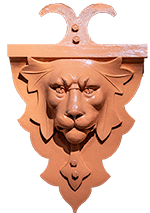Progress Report - February 2024
This update is, once more, quite overdue, but this does mean that we have a great deal to report. The big news is part way through, so keep reading!
After our August work-week we were fully occupied filling drainage and service trenches. Those on the loading dock were finished in time for grass seed to be spread, and now you wouldn’t know we were ever there! Except that we have dug some of it up again to install ‘new’ spear fencing.
It has actually become quite normal for us to work on fencing during winter. Right now, we are installing both GWR unclimbable (‘spear’) and post and wire fencing behind Oxford Road platform, on the loading dock.
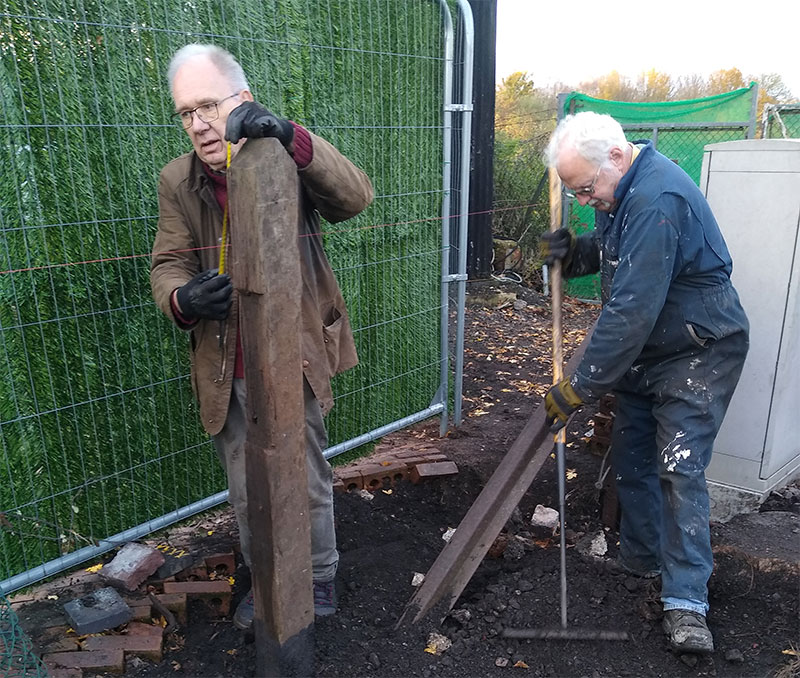
Tim Masson and Robert Heron on fence post duties
Before Christmas we tidied up at the North end of the platform where there was a mixture of temporary (i.e., installed slightly less than 40 years ago) fencing that was something of an eyesore. In our usual way, we dug lots of holes, removed the modern concrete post and wire mesh fencing and some temporary spear fencing and installed some new prototypical post and wire fencing. In doing this we used up our remaining stock of posts, cut from old sleepers (as the GWR did), but more are about to be cut so we can finish the fence on the loading dock. If you haven’t already noticed, the standard terminal and straining posts are made from bridge rail dating from the broad-gauge era. There are still plenty on the national network, and if you ever see any that are clearly redundant, we’d like them!
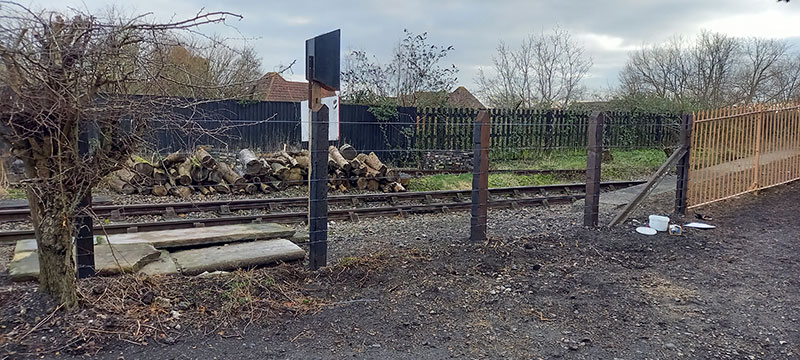
Part of the new fence at the north of Oxford Road platform
As we have begun to take more general responsibility for Oxford Road station, we have become increasingly interested in re-erecting the cast iron urinal that was recovered from Castle Cary over 50 years ago. We have been conducting a lot of background research into cast iron urinals, which were once a common sight in our streets and parks and on our railway stations. We have completed our hunt for the components which have been stored in a couple of locations, but were moved around a lot over the years. Being cast iron, several of the panels have been cracked or broken, but with the help of Pete Gransden, our resident boilersmith, we are in the process of welding some bits back together. Other breaks may be repaired using special adhesives. We've started wire brushing old rust and paint and will paint them when the weather improves.
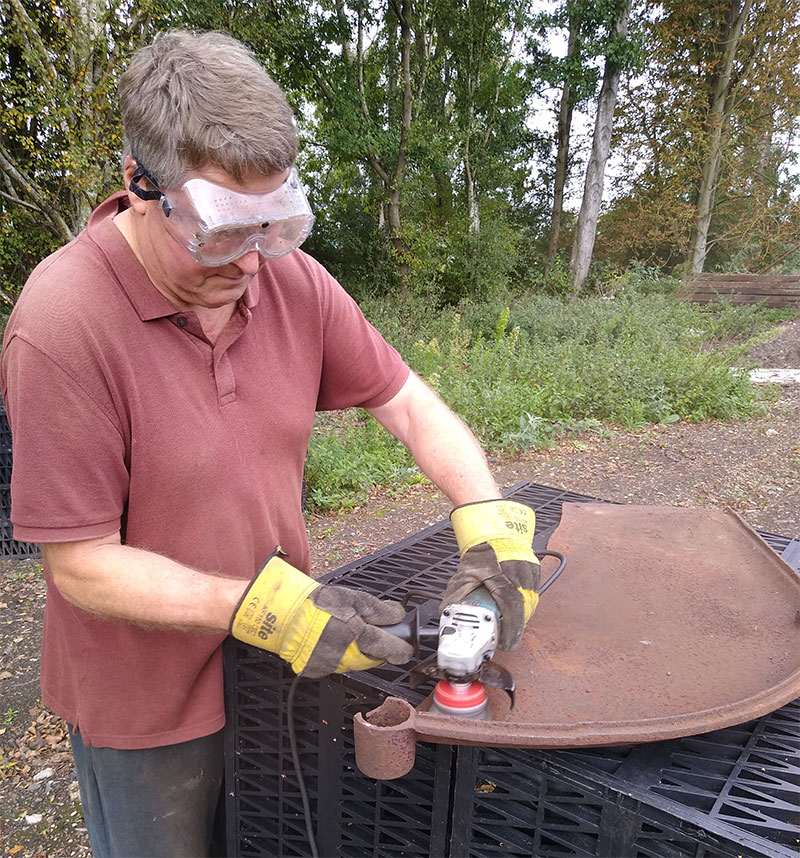
Chris Adamson cleaning part of the urinal's base
We will need to find out whether we can get a pattern made to re-cast some of the decorative ventilators and we will also need a couple of plain panels and several of the grooved rods that connected the panels together. Maybe you can help with this, or perhaps help pay for the new pieces?
Finally, and not before time I hear you cry, we turn to progress with Heyford station building itself. The major and most obvious development has been that during January and early February the steel fabricators were on site, installing the impressive structure pictured. Its purpose is to provide strength to the building so that wind load on the canopy is directed through the steel rather than the walls. It looks very tall, so tall that we were moved to double-check the measurements with the architect - it is correct.
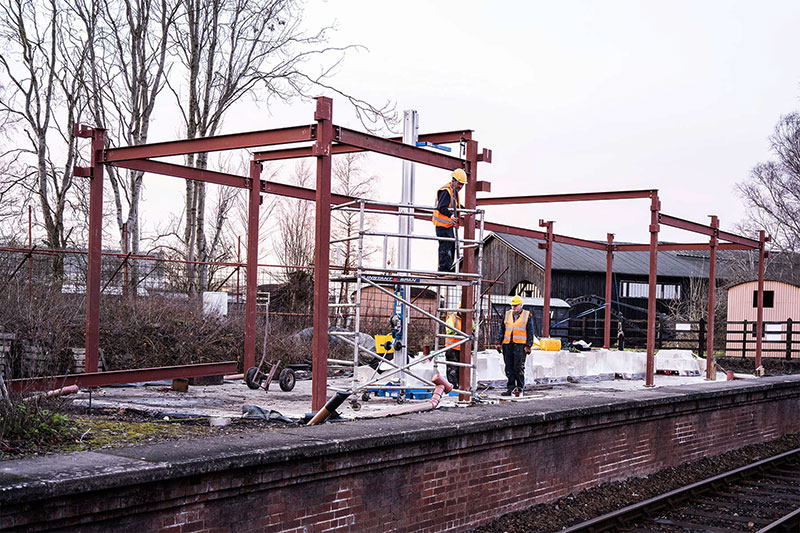
Steel erection nearing completion
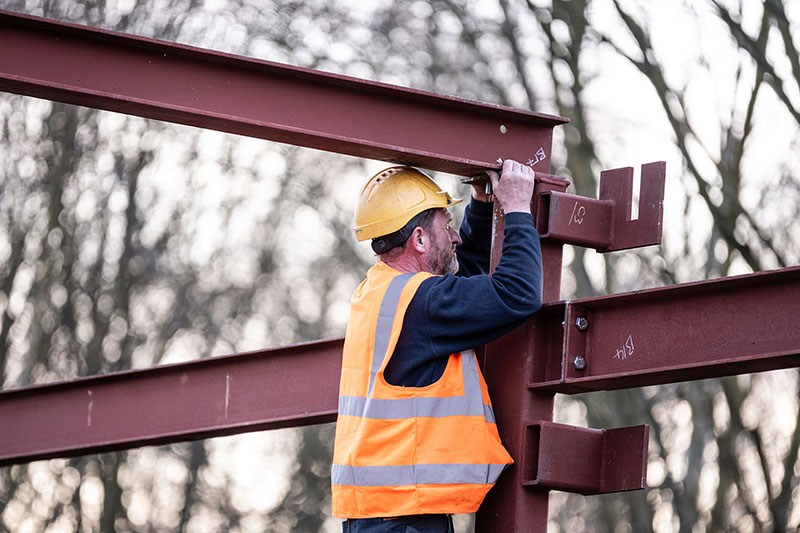
Julian the steel erector at work
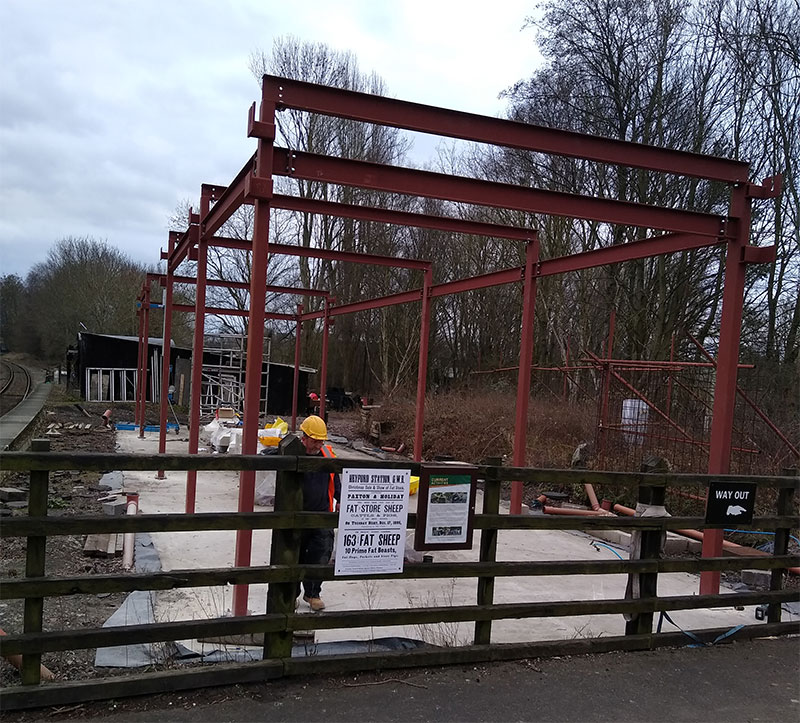
The completed steelwork, viewed looking south from the existing platform
The other long-awaited delivery is that of the new stone for the plinths. We are grateful to a late benefactor whose bequest to the Society paid for them. You may recall that the original plinth stones were left in the ground at Heyford because they were too big and heavy for us to lift in the time we were allotted by British Rail.
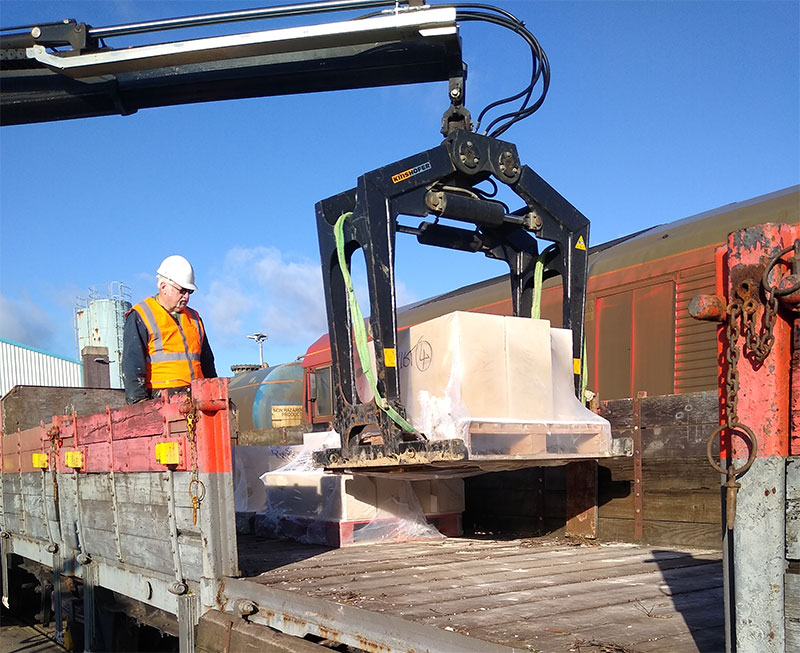
Loading the plinth stones in Didcot West Yard
Now we have the plinths, we can start thinking about building up from the foundations. Materials are being gathered on the concrete pad ready for the stone mason who is due to start within the next month when the weather improves. The GWS Board has allocated an initial sum that will allow work to start. We are grateful that the Society is willing to continue to support the project during a time when it is spending heavily on major projects – the coaling stage; the ramp and the planned refurbishment of the engine shed. Most of the money for these projects come from bequests, which is a good reminder to us all to consider making mention of the Society in our wills as this is the only way we can progress all the rolling stock and infrastructure projects that we all wish to see.
Our stone mason has agreed to work with our volunteers who will be doing the mixing; tea making and helping with the heavy lifting. We are constructing a rota now, so if you have a day free during the week and want to help, please get in touch. The main gang will continue to meet on Thursdays, when, no doubt amongst other things, we will be moving the stored stone to the work site as required.
If you can help, please contact Tim Part gws.heyford@outlook.com or via the Didcot Office, or turn up any Thursday.
